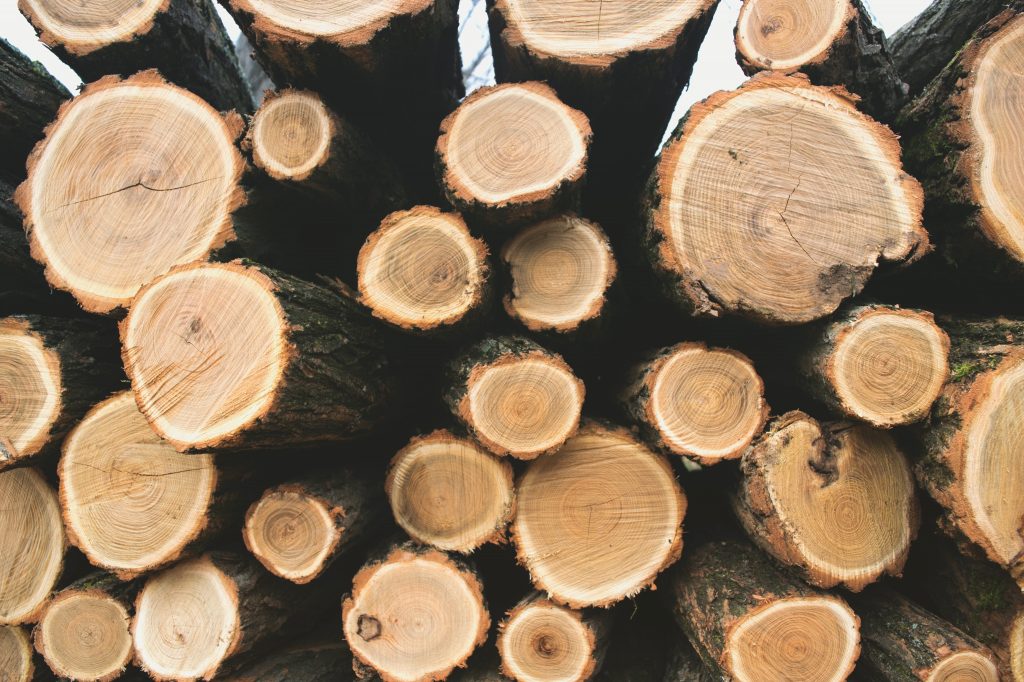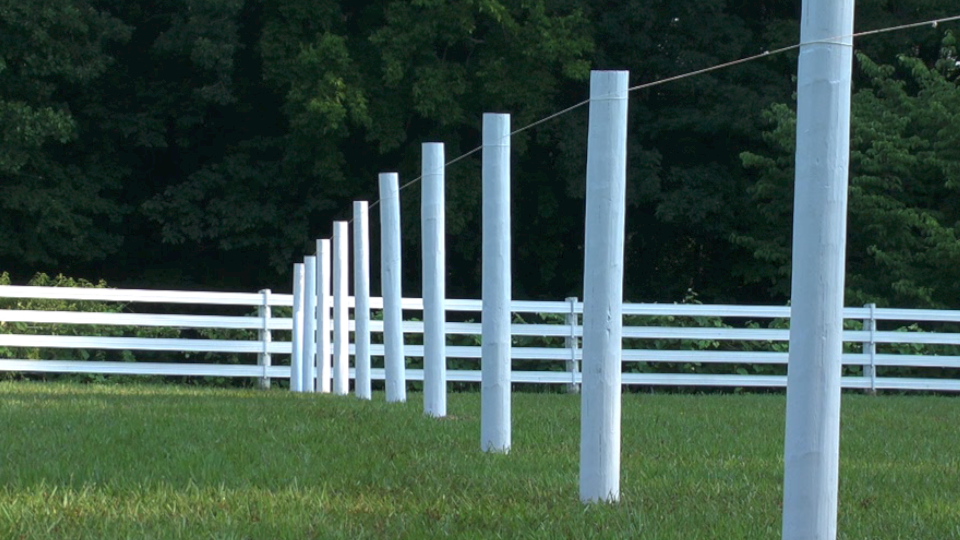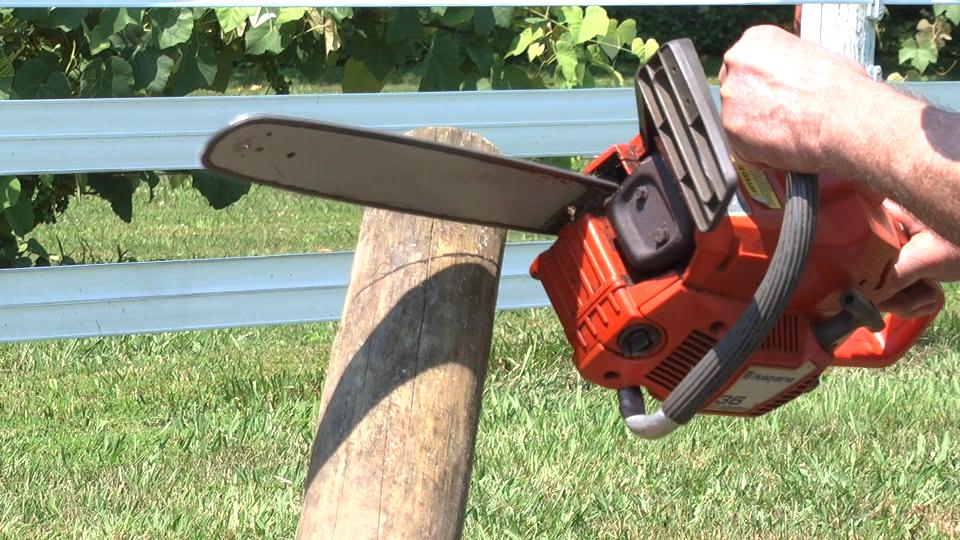Our horses’ pastures are their homes. Whether a horse is turned out for a few hours or for daily living, your pasture fencing needs to be strong and able to hold your horses. Posts hold the entire fence system together – keeping the rails in place, offering stability between rails and supporting the bracing system throughout the entire line of the fence. Essentially, your posts are ‘the backbone of your fence system’.
Rails are visual markers as well as a strong barrier for running, sliding, leaning or scratching horses. Without sturdy and strong posts, your fence cannot do its job and will not hold up long from daily use.
Fence posts are somewhat like looking at a line of brown horses. They all look alike, are about the same color and are all ‘horses’; however, once you are aware of different breeds, temperaments, bloodlines, and sizes – brown horses are not all the same by any degree. The same is true with posts. Once you understand the differences, you can make better choices for your horses’ safety and security. So let’s take a look at various posts to find out which ones will last the longest and be the strongest!
Posts are often taken for granted during the fence planning process… Be cautious when purchasing posts because you get what you pay for. Watch out for post sales that offer a good deal. Less expensive posts could mean that your posts deteriorate faster, could be harder to install or are not as straight.

From Tree to Post
After loggers find and cut trees they are de-barked. The outer layer of wood is the most susceptible to insect damage because it is softer than the inner core – that is the heart or strongest part of the tree (hence, treatment is needed for long life). The core is a dense wood that resists moisture and is supported by the outer fiber wood. This is important to keep in mind because preserving treatments differ greatly in their ability to protect the post, which determines the warranty life of the post-underground.
Wood Types
Due to the fact that specific trees thrive in different areas in the United States, posts vary greatly because of demographics – which also warrants prices. Popular wood choices such as Southern Yellow pine is exceptionally strong and easy to nail into, however, it is not plentiful in many areas so it costs more due to shipping/freight. Red Pine is more abundant, is easy to nail through and is slightly softer than Yellow Pine. Hardwoods such as Oak and Locust become harder as they cure. Hardwoods can sometimes be sold ‘on sale’ and unsuspecting buyers think they are getting a wonderful deal when in reality, older hardwoods can make installation a nightmare, bending nails with every attempted swing of a hammer. The only solution is to drill pilot holes into posts to accept nails, doubling installation efforts. That’s a lot of drilling!
Landscape timbers, made specifically for landscape beautification above ground, are often thought of as an inexpensive post but their short life creates double the work to replace and twice the cost in replacements. They are the heart of the tree and intended for yard landscaping but they are unable to absorb the preserving treatment that is needed to give the post a long life. These posts may even deteriorate within a year when set in the ground. Also, these posts are not long enough or wide enough to get adequate footage in the ground for a standard 54” post height that is needed for horses.
Railroad ties and telephone poles can be a poor choice for horse fencing. Any older post can deteriorate from the inside out (as well as the outside in), compromising the integrity of the post. Your costs could soon escalate from posts that deteriorate quickly when having to repurchase posts and reinstall them, especially with an existing fence system.

Preserving Treatments
Raw posts directly from the mill are not preserved with a treatment for longer life. Depending on the type of treatment, wood posts can have a life expectancy of over 60 years – in the ground. Posts can be simply dunked and rolled in a treatment or they can be pressure treated. This kind of treating can provide a warranty allowing the buyer to know how long the post will last (underground). Pressure treating is a process where the moisture in the posts is drawn out, creating a vacuum and then treatment is drawn back into the post. This process allows the treatment to penetrate deeper into the core. No other treatment can protect the wood quite this way because of the depth of the treatment. Warranties can be rated from a .20 retention level, meaning the post has a 20-year life expectancy, to a .60 level, meaning a 60-year warranty. Most posts are tagged when they are rated with a retention level. Your local wood supplier can further give you warranty details about post-life expectancy.

Post Cuts and Sizes
Posts can be rough-cut or smooth. Rough-cut posts are a little harder to work with vs. smooth and costs can vary along with treatments. With horses, smooth posts provide less of a chance for a horse to rub off hair or get manes and tails caught on the wood.
Generally, square posts( 4” x 4” treated) are used with board rails and round posts are often used with a flexible fence system. Depending on frost levels, you would use a
6” round post x 8’ or 9’ length for end posts and 4” or 5” round by 8’ length for line posts. The surface space on a round post is less than a flat post. Horses tend to have less of a chance for injury when coming in contact with a smooth round post and tend to slide past the post rather than getting caught on a square corner. Half-rounds or faced posts can be less than full rounds, but you get only half the strength when rubbed on or pushed against.
Straight cut posts are one size all the way down the post vs. tapered posts that are larger at one end than the other. Tapered posts should be installed with the larger end in the ground. The strength of a tapered post can vary due to the cut and can be weaker than a straight cut post.
Most horse fences are 4 ½’ to 5’ tall to accommodate taller horses and discourage jumping. The length of your post ensures the strength of the entire fence system and also allows your posts to remain straight from daily use. Taller fence systems need more of the post in the ground to support the uprights. Make sure that posts are 3 feet in the ground in frost & thaw areas and 2 – 2 1/2 feet in warmer climates. This gives longer life to your entire fence system as well as a safer fence for your horses.
Bundles Vs. Single Posts
When purchasing posts for a new pasture you will most likely be getting bundled posts. Ask what quantities of posts are in each bundle. Larger corner or end post bundles have fewer posts per bundle than smaller line posts with more posts per bundle. Purchasing in quantity can save you money. You may end up with a few extra posts, but you may want to keep them on hand for future fencing or replacing if an accident occurs, such as a fallen tree on your fence line.
Truckload (1000 posts) or half truckload posts (500 posts) can sometimes be more economical than piecing your posts as you go along. Call your local dealer to find out freight costs and delivery times.
There is a lot to know when it comes to posts. They hold your rail, give it stability and keep your horses in their ‘homes’. Closer post spacing is better when it comes to horses, adding extra strength and providing a safer pasture area. Budget for the best posts you can; you will be glad years down the road when your fencing still looks beautiful and working like it should!
For more on budgeting check out our blog Family, Financing, and Fencing.



